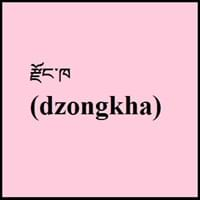Amharic and Dzongkha
Countries
Federal Democratic Republic of Ethiopia.
Bhutan
National Language
Ethiopia
Bhutan
Second Language
Not spoken in any of the countries
India
Speaking Continents
Africa
Asia
Minority Language
Not spoken in any of the countries
India
Regulated By
Not Available
Dzongkha Development Commission
Interesting Facts
- Amharic ranks as second most spoken Semitic language in the world.
- Amharic has its own writing system named “fidel” and it uses Amharic alphabets to write.
- Standard romanization of the Dzongkha language is Roman Dzongkha.
Similar To
Not Available
Sikkimese Language
Derived From
Not Available
Tibetan Language
Alphabets in
Amharic-1.jpg#200
Dzongkha-Alphabets.jpg#200
Scripts
Ethiopic
Dzongkha Braille, Tibetan Braille
Writing Direction
Left-To-Right, Horizontal
Not Available
Language Levels
Not Available
Time Taken to Learn
Not Available
Hello
Selam
Kuzoozangpo La
Thank You
amesege'nallo'
Kaadinchhey La
How Are You?
Dehina newot?
Ga Day Bay Zhu Yoe Ga ?
Good Night
Dehna dur
lek shom ay zim
Good Evening
melkam meshe't
Not Available
Good Afternoon
i'ndemin walu
Not Available
Good Morning
i'ndemin adäru
Not Available
Please
i'bakwon
Not Available
Sorry
aznallehu
Tsip maza
I Love You
afekirishalehu
Nga cheu lu ga
Excuse Me
yiqirta
Tsip maza
Where They Speak
Gondar
Bhutan
How Many People Speak
Not Available
Where They Speak
Ethiopia
Bhutan
How Many People Speak
Not Available
Where They Speak
Ethiopia
Bhutan
Total No. Of Dialects
Not Available
Speaking Population
Not Available
Native Name
Not Available
རྫོང་ཁ (dzongkha)
Alternative Names
Abyssinian, Amarigna, Amarinya, Amhara, Ethiopian
Bhotia of Bhutan, Bhotia of Dukpa, Bhutanese, Drukha, Drukke, Dukpa, Jonkha, Rdzongkha, Zongkhar
French Name
amharique
dzongkha
German Name
Amharisch
Dzongkha
Pronunciation
[amarɨɲɲa]
Not available
Ethnicity
Amharas
Ngalop people
Origin
13th century
17th Century
Language Family
Afro-Asiatic Family
Sino-Tibetan Family
Subgroup
Semitic
Not Available
Branch
Ethiopic
Tibeto-Burman
Early Forms
Ge'ez
No early forms
Standard Forms
Amharic
Dzongkha
Language Position
Not Available
Signed Forms
Signed Amharic
Not Available
Scope
Individual
Individual
ISO 639 6
Not Available
Not Available
Glottocode
amha1245
nucl1307
Linguasphere
12-ACB-a
No data Available
Language Type
Living
Living
Language Linguistic Typology
Not Available
Not Available
Language Morphological Typology
Fusional
Not Available
All Amharic and Dzongkha Dialects
Most languages have dialects where each dialect differ from other dialect with respect to grammar and vocabulary. Here you will get to know all Amharic and Dzongkha dialects. Various dialects of Amharic and Dzongkha language differ in their pronunciations and words. Dialects of Amharic are spoken in different Amharic Speaking Countries whereas Dzongkha Dialects are spoken in different Dzongkha speaking countries. Also the number of people speaking Amharic vs Dzongkha Dialects varies from few thousands to many millions. Some of the Amharic dialects include: Gondar, Gojjami. Dzongkha dialects include: Laya , Lunana. Also learn about dialects in South American Languages and North American Languages.
Amharic and Dzongkha Speaking population
Amharic and Dzongkha speaking population is one of the factors based on which Amharic and Dzongkha languages can be compared. The total count of Amharic and Dzongkha Speaking population in percentage is also given. The percentage of people speaking Amharic language is 0.37 % whereas the percentage of people speaking Dzongkha language is Not Available. When we compare the speaking population of any two languages we get to know which of two languages is more popular. Find more details about how many people speak Amharic and Dzongkha on Amharic vs Dzongkha where you will get native speakers, speaking population in percentage and native names.
Amharic and Dzongkha Language Codes
Amharic and Dzongkha language codes are used in those applications where using language names are tedious. Amharic and Dzongkha Language Codes include all the international language codes, glottocodes and linguasphere.





